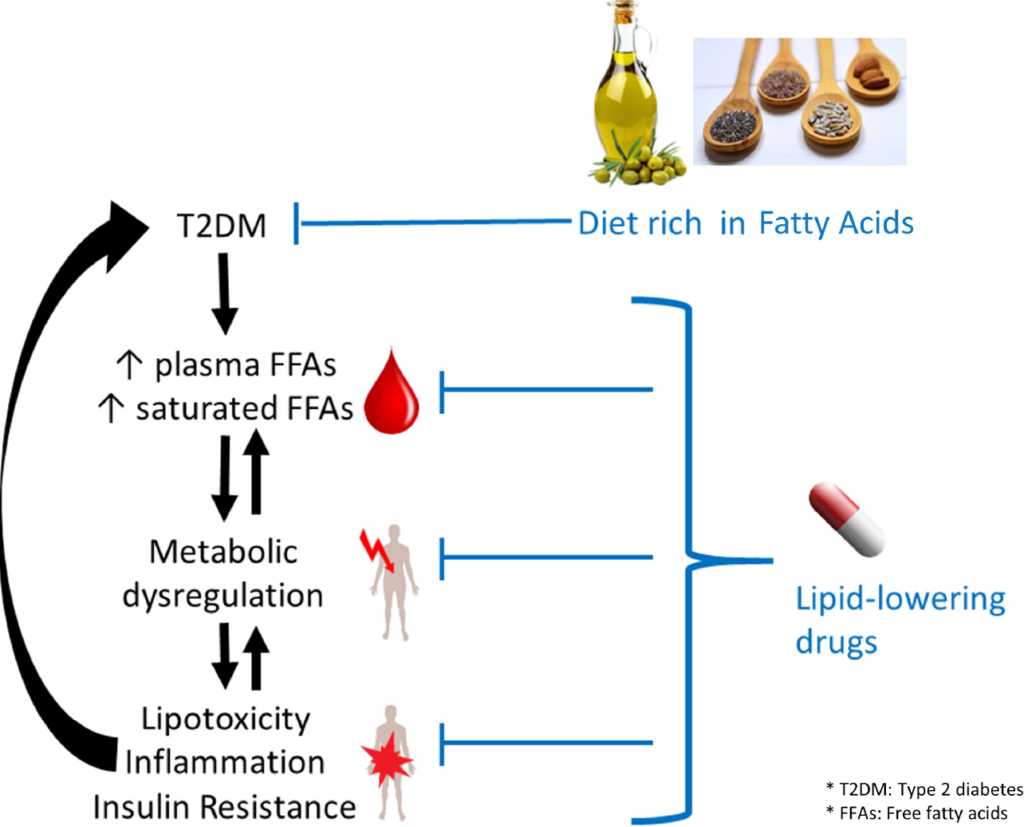New Immunophenotypic Profiling helps identify Type 2 Diabetes (T2D) patients at risk of severe COVID-19
Published on 10/10/2022
The Biochemistry & Molecular Biology Department at DDI published an article that investigated the effects of increased toxicity caused by palmitic acid (PA) on insulin regulation. PA, a type of free fatty acid, is found in fruits, meat, and various dairy products. Increased levels of PA lead to insulin resistance; however, its mechanism of action remains unclear.
The study focused on one of the target receptors of PA, called Free Fatty Acid Receptor 1 (FFAR1), and how altering its levels may contribute toward the dysregulation of insulin and loss of function of pancreatic β-cells.
A rat-cell model that mimics the physiology of human β-cells was used for this study. FFAR1 plays a key role in the development of T2D and studies have shown the importance of developing anti-diabetic therapies against FFAR1. The main finding of the study revealed that toxic levels of PA affected insulin secretion in response to different glucose concentrations.
This had a downregulatory effect on important regulators of the insulin pathway. The study suggests a possible novel role of FFAR1 in the well-established insulin signaling pathway under lipotoxic conditions.
Studying how key targets — such as FFAR1 — work, along with their physiological relevance to β-cell function is important to have a better understanding of the development of T2D. Such discoveries would help develop new anti-diabetic targeted therapies.
Sulaiman K. Marafie, Eman M. Al-Shawaf et al. Palmitic acid-induced lipotoxicity promotes a novel interplay between Akt-mTOR, IRS-1, and FFAR1 signaling in pancreatic β-cells. Biological research, 52, 1, 8 2019. DOI: https://10.1186/s40659-019-0253-4



